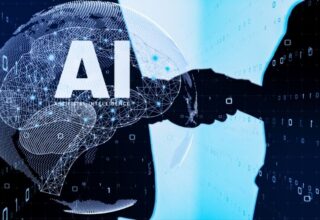
There’s no shortage of AI hype. Scroll through LinkedIn, flip on the news, or sit in on a board meeting, and it’s the same drumbeat: AI is the next big thing.
They’re not wrong. McKinsey estimates that AI could generate up to $6 trillion in annual value by 2030 through efficiency gains, cost savings, and new revenue streams. MIT Sloan found that companies scaling AI successfully are twice as likely to exceed performance goals over the next three years.
But here’s what those headlines don’t tell you: most AI projects never make it to the finish line. And it’s not usually because the technology fails. It’s because the business wasn’t ready to use it.
The Reality No One Likes to Admit
We’ve seen it happen again and again:
- A model works beautifully in the lab, but slows to a crawl in production because the network wasn’t built for the load.
- Compliance flags get thrown after deployment because no one planned for how AI pipelines handle sensitive data.
- A brilliant AI tool “goes dark” because it doesn’t integrate into the systems employees actually use.
These are avoidable mistakes. But without a readiness-first mindset, they’re inevitable.
When AI Goes Wrong
Here’s a real example.
A global logistics firm rolled out an AI-driven route optimization tool without a readiness phase. The idea was simple: speed up deliveries, save money, delight customers.
Instead:
- The AI overwhelmed their compute cluster, causing delays.
- Sensitive routing data was logged without proper encryption, triggering a compliance audit.
- The operations team wasn’t trained to troubleshoot, so every small glitch became a crisis.
Within two months, the project was pulled. The cost? $2.7 million in remediation, plus lost trust with customers and leadership.
All because they tried to skip straight to “go-live.”
What Readiness Really Means
Readiness isn’t just “checking a few boxes.” It also answers some uncomfortable but essential questions before you commit a single workload to production:
- Infrastructure: Can your systems actually handle AI at scale?
- Governance: Is compliance baked in from day one?
- Integration: Will AI results flow naturally into your existing workflows?
- People: Are your teams trained and ready to work with it?
If any of those answers are shaky, you’re not ready, no matter how advanced your AI model is.
From Checklist to Real-World Wins
When readiness is done right, everything changes.
Let’s look at two very different organizations that took the time to get ready, and saw the payoff.
Retail Without the Headaches
A national retailer wanted to use AI to improve demand forecasting and tailor promotions to individual customers. The temptation? Jump in fast. Instead, they paused for a readiness assessment. It uncovered:
- Wireless coverage gaps that would slow inventory updates.
- POS data governance rules that had to be locked down before AI touched it.
- Ways to integrate AI with their CRM without rewriting legacy code.
Because they solved these issues first, the AI rollout took six weeks instead of months. They saw measurable revenue gains in the first quarter, and no downtime.
Healthcare Without the Risk
A healthcare provider wanted AI-assisted diagnostics. But in this field, “move fast and break things” is not an option. Their readiness process revealed:
- HIPAA compliance gaps in how patient data was stored and moved.
- Infrastructure bottlenecks when running AI alongside EHR workloads.
- The need for clinician training so they’d trust AI recommendations.
The result? Zero downtime at launch, diagnostic speed improved by 24%, and regulators gave them a clean bill of health from day one.
Why Readiness Pays for Itself
Gartner predicts that by 2027, half of AI projects will stall before reaching production due to infrastructure, governance, or integration issues. And here’s the kicker: fixing those problems midstream costs 2-3 times more than addressing them upfront.
Readiness isn’t just risk management. It’s acceleration. IDC estimates that aligning AI deployments with infrastructure and compliance frameworks can cut time-to-value by up to 40%.
The Platform Behind the Wins
Those retail and healthcare stories have something in common: the technology foundation underneath them. At WEI, we deliver HPE Private Cloud AI (PCAI), a fully integrated, enterprise-ready AI platform as part of a complete, readiness-first deployment.
This means the same team that prepares your environment is the one that builds, integrates, and optimizes your AI foundation. No juggling vendors. No handoffs. No lost momentum.
Why HPE PCAI Is Built for Success
PCAI isn’t just another AI toolkit. It’s a platform designed for speed, scale, and security from the start:
- Pre-integrated stack: Compute, storage, networking, and NVIDIA AI software, tested and optimized to work together.
- Scalable design: Start small, scale seamlessly as workloads grow.
- Compliance-ready: Architected to meet strict data residency and regulatory requirements from day one.
But even the best platform can fail if it’s dropped into an unprepared environment. That’s why HPE works with partners like WEI, to make sure PCAI delivers in the real world.
Why HPE Chose WEI
HPE knows that AI success isn’t just about technology, it’s about execution. WEI has the proven track record to:
- Identify and close readiness gaps before go-live.
- Right-size deployments so you’re not over- or under-provisioned.
- Embed compliance so there are no mid-project surprises.
- Train your teams to own and expand AI capabilities over time.
This is the combination that turns AI from an expensive experiment into a competitive advantage.
The Clock Is Ticking
Early movers who launch AI successfully don’t just get ROI faster, they set the bar everyone else has to meet. Your competitors are already making moves. The question is, will you be ready when it’s your turn to launch? With a readiness-first approach, the right platform, and a partner who can deliver it all, you can move quickly, and confidently. Contact the experts at WEI to get started.
Next Steps: In our exclusive white paper, Avoiding AI Failure: A Proven Infrastructure Strategy for Sustainable Business Results, we further expose the hidden reasons why so many AI projects fail to make it past the pilot stage and offer a practical roadmap to success. Download at your convenience!





